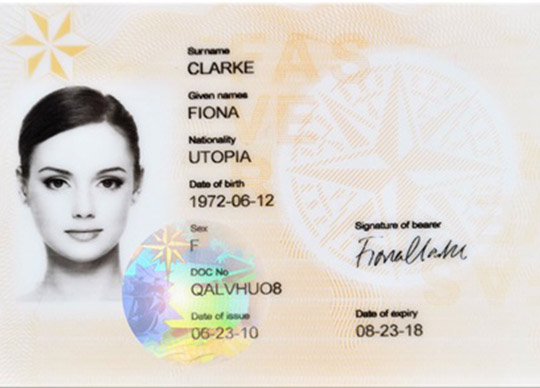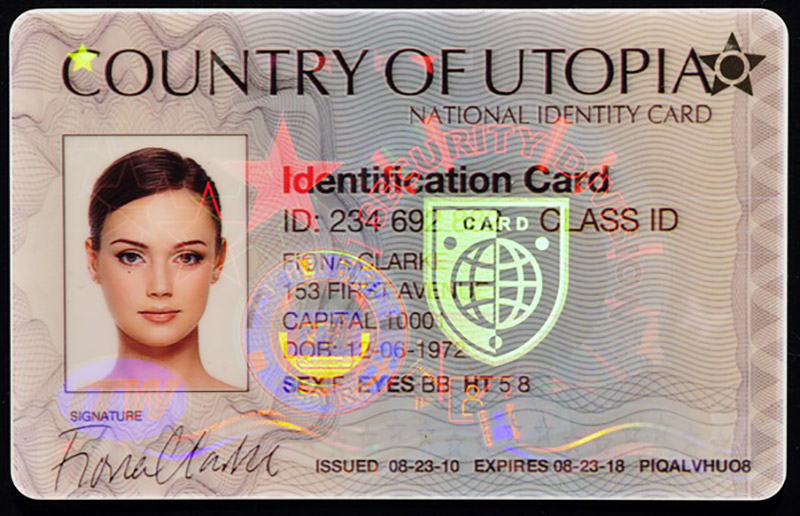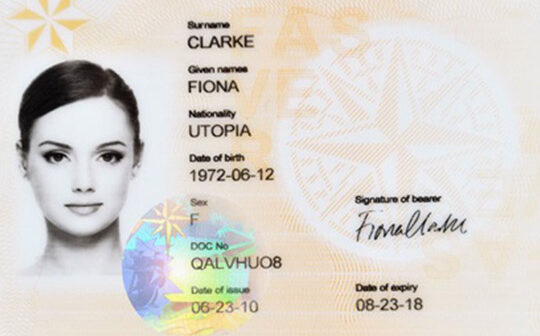
In an era marked by technological innovation, the safeguarding of personal identities has become a paramount concern for governments worldwide. As the frequency of identity theft and fraudulent activities rises, the incorporation of holography in essential documents such as ID cards, driving licenses, and passports has emerged as a cornerstone in the fight against counterfeit and forgery. Let’s explore the profound importance of holography and provides insight into some of holography’s characteristics in enhancing the security features of these critical documents.
Visual deterrence
Holography serves as a powerful visual deterrent against counterfeiters. The intricate and dynamic holographic images incorporated into ID cards and passports are exceptionally difficult to replicate using traditional printing methods. The three-dimensional nature of holograms adds a layer of complexity that not only enhances the visual appeal of the documents but also discourages counterfeit attempts due to the difficulty of reproduction.
Authentication at a glance
One of the key advantages of holographic features is their ease of authentication. Law enforcement officers, border control agents, and other authorities can quickly and reliably verify the authenticity of a document by visually inspecting holographic elements with the naked eye. This facilitates efficient and accurate identity checks, contributing to enhanced border security and reduced instances of identity fraud.
Tamper-evident security
Holographic features often include elements that are extremely sensitive to tampering for all substrate types. Attempts to remove, alter, or modify the hologram usually result in visible damage, serving as an immediate red flag. This tamper-evident quality not only deters potential counterfeiters but also aids authorities in identifying suspicious or altered documents during routine inspections.

Cutting-edge holographic technologies
Advances in holographic technologies have led to the development of a variety of innovative security features at all security levels (overt, covert and forensic). Features at the nano scale and pixel-level encoding provide an additional layer of sophistication, making it even more challenging for counterfeiters to replicate or forge holographic elements. These cutting-edge technologies contribute to staying one step ahead of counterfeit threats.
Public trust and confidence
The integration of holographic security features instils a sense of trust and confidence in the general public. Knowing that their personal information is protected by state-of-the-art holographic technologies enhances the perceived reliability of government-issued documents. This, in turn, fosters public trust in the integrity of identity verification processes.
Global standards and collaboration
The use of holography in secure documents aligns with global standards, facilitating international collaboration in combating identity-related crimes. Shared practices in holographic security contribute to a unified front against counterfeiters, promoting consistency and effectiveness in identity verification procedures worldwide.
As the digital age brings both opportunities and challenges, the importance of holography in securing ID cards, driving licenses, and passports cannot be overstated. The integration of holographic features not only raises the bar for counterfeiters but also serves as a testament to governments’ commitment to protecting the identities of their citizens. In an interconnected world, where the movement of people is constant, holography stands as a stalwart guardian, ensuring the authenticity and integrity of the documents that define our identities.
*In addition to being an IHMA board member, Dr Mark Deakes work for ITW Speciality Films, part of the US headquartered ITW Group, in research and development.






